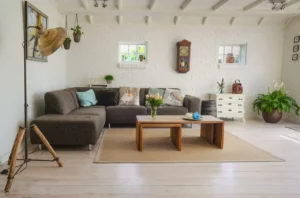How to Start a Decorating Business

Welcome to the Dynamic World of Decorating!
Picture transforming everyday living areas into beautiful, personalized spaces and earning an income doing so. If you’ve been contemplating how to launch a decorating business, considering how to establish a prosperous decorating business, or simply understanding the initial steps of starting in decorating, then you’ve found your starting point.
Let’s delve into the essentials: identifying crucial skills, discovering exciting career paths, accumulating experience as an independent contractor, acquiring pertinent training and certifications, and beyond. This guide will serve as your blueprint to converting your flair for design and decor into a flourishing business.
As you embark on this journey, remember that success in decorating hinges on creativity, understanding client needs, and continuously evolving your style and approach. Welcome to the vibrant and rewarding world of decorating!
Starting Your Decorating Business:
Many individuals interested in decorating wonder about the best approach to establish their own business, frequently questioning, “What are the initial steps in creating a decorating company?” or “How can I successfully set up my own decorating enterprise?” The solution is more straightforward than you might think.
Embarking on your decorating business journey starts with crafting a clear and compelling mission statement. This statement serves as the foundational narrative of your business, encapsulating goals such as “Transforming spaces into aesthetic narratives” or “Bringing personalization and flair to every room.” It’s important that your mission resonates deeply with your aspirations and the unique value you plan to provide.
Alongside developing a mission that speaks to your business’s heart, pinpointing your target market is crucial. Understanding the specific group of people who will most benefit from your decorating services will enable you to tailor your marketing and outreach strategies effectively, ensuring you connect with the clients who need your vision and skills the most.
Whether it’s homeowners looking to refresh their space or businesses seeking an inviting atmosphere, identifying your audience is a key step in the journey toward a successful decorating business.
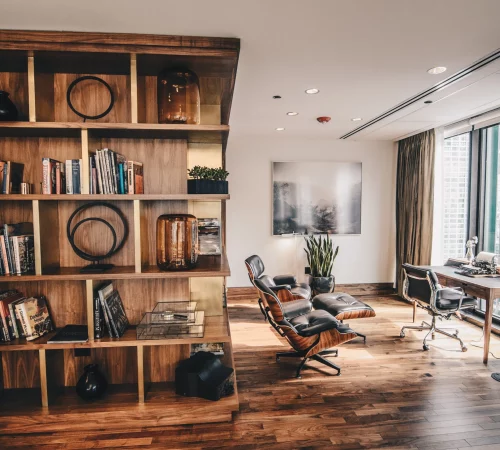
How to Start a Decorating Business?
Embarking on a decorating business journey begins with a passion for aesthetics and function. Here are key points to consider that will be expanded upon in the following sections:
- Explore Decorating Niches: Identify specific areas you are passionate about or that are in demand, such as sustainable design, commercial spaces, or residential styling.
- Seek Professional Training and Certification in Decorating: Enhance your credibility and skills through education such as professional certification programs.
- Develop Your Brand and Marketing Plan: Create a strong brand identity and strategic marketing plan to attract and retain clients.
- Establish Your Client Base: Understand and fulfil the requirements of prospective clients.
- Set Your Pricing Structure and Services: Determine competitive yet profitable pricing and clearly define the scope of your services.
The journey to starting your own decorating business involves a blend of creativity, business strategy, and client management. Each of these points will set the foundation for a successful venture and will be discussed in detail throughout the blog.
1. Explore Decorating Niches
When starting your decorating business, one of the first steps is to identify and explore various decorating niches. This means looking into specific areas of decorating that you are passionate about or that are in demand.
Niches allow you to specialize and become an expert in a particular style or type of decorating, making your business stand out. Here are some popular niches and considerations for identifying your target audience:
Decorating Niches
Sustainable Design: With an increasing global focus on environmental impact, sustainable design is not just a trend but a significant shift in the decorating industry.
- This niche involves using eco-friendly and sustainable materials, maximizing energy efficiency, and creating healthy, environmentally-conscious spaces.
- Target audience includes environmentally conscious clients, green businesses, and anyone interested in reducing their ecological footprint.
Commercial Spaces: Specializing in commercial spaces means focusing on businesses, including offices, retail stores, restaurants, or hotels.
- This niche requires understanding of branding and functionality to create spaces that are not only beautiful but also enhance customer experience and employee productivity.
- Your target audience here includes business owners, commercial real estate developers, and corporate clients.
Residential Styling: This is perhaps the most personal niche, involving decorating homes to reflect the personalities and lifestyles of residents.
- Whether it’s full-scale renovations or providing consultation for DIY decorators, residential styling can range from budget-friendly makeovers to luxury designs.
- The target audience includes homeowners, real estate agents looking to stage homes for sale, and residential developers.
When identifying your target audience within these niches, consider the following:
- Demographics: Age, income level, location, and lifestyle of your ideal clients.
- Psychographics: Values, attitudes, and tastes that influence your clients’ buying decisions.
- Needs and Preferences: Specific problems your target audience faces that you can solve, and their preferences in style, communication, and services.
2. Seek Professional Training and Certification in Decorating
If you’re considering how to start a decorating business, laying a solid foundation with formal training can significantly boost your credibility. While natural talent is an asset, training programs, like those offered at Ultimate Academy®, provide a comprehensive curriculum that sharpens your skills further, enhancing both your creativity and technical knowledge.
Professional Certification Programs
Professional certification programs are designed to provide you with a structured and comprehensive understanding of the decorating industry. These programs often cover:
- Decorating Principles: Understanding the fundamentals of design, including color theory, spatial arrangements, and style identification.
- Market Analysis: Learning about current trends, client demographics, and market needs to tailor your services effectively.
- Effective Decorating Techniques: Gaining practical skills for various types of projects, ensuring you can handle both big and small assignments with professional finesse.
The Ultimate Academy® Advantage
The Decorating & ReDesign course offered by Ultimate Academy®, for example, delves into both the theoretical and practical aspects of decorating.
It provides extensive knowledge about different facets of the industry and hones your ability to apply effective decorating techniques. Such comprehensive curriculum ensures you’re well-versed in the many layers of the decorating process.
What sets apart a good decorator from a great one is often their business acumen and interpersonal skills. The Decorating & ReDesign course offered by Ultimate Academy® includes:
- Business Strategies: Learn how to navigate the business side of decorating, including creating business plans, understanding pricing strategies, and managing finances.
- Sales and Marketing: Strategies specific to decorating, helping you to effectively promote your services and attract clients.
- Entrepreneurship: Fostering an entrepreneurial mindset and understanding the essentials of starting and running a successful decorating business.
- Client Communication and Relationship Management: Developing skills in client interactions, negotiations, and maintaining long-term client relationships.
- Project Coordination: Understanding how to manage projects from concept to completion, ensuring smooth operations and client satisfaction.
- Ethical Practices: Emphasizing the importance of integrity and professionalism in all dealings.
Embarking on certification with Ultimate Academy® marks a significant advancement in your career, equipping you with the foundational knowledge and skills needed to begin your venture in the decorating business. As a proficient and assured decorator and entrepreneur, you’ll be well-prepared to create beautiful spaces that resonate with clients and establish a successful, thriving business in the world of decorating.
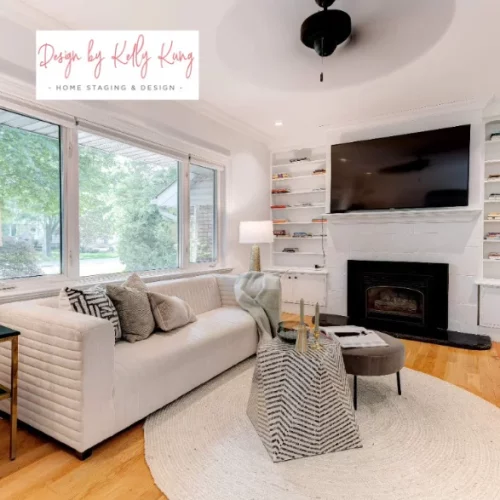
3. Develop Your Brand and Marketing Plan
Creating a strong brand identity and strategic marketing plan is crucial for attracting and retaining clients in the decorating business. A well-defined brand reflects your style, values, and professionalism, while a comprehensive marketing plan ensures that your target audience knows about you and trusts your expertise.
Here’s how Ultimate Academy®’s Decorating & ReDesign course can help you develop each aspect:
Brand Identity
- Defining Your Style: The course helps you understand different decorating styles and encourages you to identify or develop your unique style, which will become a significant part of your brand identity.
- Creating a Logo and Visual Elements: Learn the importance of visual elements like logos, color schemes, and typography that reflect your brand’s aesthetics and appeal to your target market.
- Developing a Brand Voice: Understanding how to communicate your brand through content, whether it’s your website text, blog posts, or social media updates, ensuring it resonates with your audience.
Marketing Plan
- Understanding Your Target Market: The course emphasizes the importance of identifying and understanding your ideal clients, including their needs, preferences, and behaviors, which is crucial for any effective marketing strategy.
- Utilizing Different Marketing Channels: Learn about various marketing channels such as social media, email marketing, content marketing, and traditional advertising, and how to use them to reach and engage your target audience effectively.
- Creating a Marketing Strategy: Guidance on how to develop a cohesive marketing strategy that combines different tools and platforms to create a consistent and compelling message about your brand.
- Implementing and Evaluating Marketing Tactics: Learn not only how to implement these strategies but also how to evaluate and adjust them based on performance, ensuring the best possible return on investment.
By covering these essential aspects of brand and marketing development, Ultimate Academy®’s Decorating & ReDesign course equips you with the knowledge and tools you need to build a distinctive and appealing brand, along with a strategic marketing plan that drives business growth and client retention.
This comprehensive approach ensures you not only learn the theoretical aspects of branding and marketing but also gain practical skills and insights that can be directly applied to establishing and growing your decorating business.
4. How Do You Grow Your Decorating Business? Establish a Client Base:
Establishing a client base is a critical component of any successful decorating business. It involves understanding the needs and desires of prospective clients and developing strategies to connect with them. Here’s how to approach this vital aspect of your business:
Understanding Client Needs
- Conduct Market Research: Start by researching your target market to understand the preferences, pain points, and expectations of your potential clients. This might involve studying market trends, conducting surveys, or analyzing competitors.
- Client Consultations: Engage in one-on-one consultations to understand individual client needs. This helps in customizing your services and approach for each project.
- Feedback Loop: Establish a system for receiving and analyzing feedback from clients. This will help you continuously improve your services and better meet the needs of future clients.
Making Connections Through Networking
- Industry Events and Trade Shows: Attend local and national events related to decorating and design. This can be an excellent opportunity to meet potential clients and other professionals with whom you can form mutually beneficial relationships.
- Local Community Involvement: Participate in local community events, join business networks, or collaborate with local businesses to increase visibility and credibility in your area.
- Online Networking: Utilize social media platforms, online forums, and professional networks like LinkedIn to connect with potential clients and other industry professionals.
Making Connections Through Networking
- Referral Programs: Encourage satisfied clients to refer others by offering incentives. Word-of-mouth can be a powerful tool in expanding your client base.
- Targeted Marketing: Use the information from your market research to create targeted marketing campaigns. Whether through social media, email marketing, or traditional advertising, make sure your message resonates with your intended audience.
- Personalized Approach: Tailor your services to meet the unique needs of each client. Offering personalized solutions can significantly enhance client satisfaction and loyalty.
Leveraging Client Relationships
- Build Trust: Be consistent, reliable, and transparent in all your dealings to build trust with your clients. Trust is the foundation of any lasting business relationship.
- Ongoing Communication: Keep in touch with past clients. Regular updates, newsletters, or greetings can keep you in their minds for future projects or referrals.
- Upselling and Cross-Selling: Once you have established a client base, look for opportunities to offer additional services or upgrades that might interest them.
By understanding and fulfilling the needs of your clients and making connections through effective networking, you can establish a robust client base that not only seeks your services but also recommends you to others. This approach not only helps in acquiring new clients but also in retaining them, ensuring the long-term success of your decorating business.

5. Set Your Pricing Structure and Services for Your Decorating Business
Determining the right pricing structure and clearly defining the scope of your services are crucial steps in setting up a successful decorating business. It’s about finding the balance between being competitively priced and ensuring profitability. Here’s how to approach this:
Understanding Cost and Value
- Market Research: Start by researching what other decorators are charging in your area. Understand the market rate for various services and how they are packaged.
- Cost Analysis: Calculate your costs including materials, labor, overhead, and any other expenses. This will be the baseline to ensure that your pricing covers costs and leaves room for profit.
Developing a Pricing Matrix
- Pricing Strategies: Consider various pricing strategies such as cost-plus (marking up your cost), value-based pricing (charging based on the perceived value to the client), or competitive pricing (aligning with market rates).
- Pricing Structure: Decide whether you’ll charge by the hour, per project, or offer packaged services. Each has its advantages and should align with how you work and how your clients prefer to pay.
- Flexibility: Allow some flexibility in your pricing for special circumstances or for loyal clients, but always ensure that you’re not undervaluing your work.
Clearly Define Scope of Services
- Detailed Proposals: Provide detailed proposals to clients that clearly outline what is included in your services, what is not, and any conditions or limitations. This helps in setting clear expectations from the start.
- Customization: Be prepared to customize packages or services based on client needs while ensuring it’s still profitable for you.
- Transparency: Be transparent about your pricing and the factors that influence it. This helps in building trust and justifying your rates to clients.
Ultimate Academy®'s Decorating & ReDesign Course Approach to Pricing
Ultimate Academy®’s Decorating & ReDesign course understands the importance of a well-structured pricing strategy and offers comprehensive guidance on this topic:
- Pricing Matrix: The course will cover how to develop a pricing matrix that takes into account various factors such as cost, market rate, and perceived value. It will help you understand how to position your services competitively in the market.
- Pricing Exercises: Students will partake in pricing exercises that simulate real-world scenarios. These exercises help in understanding the nuances of pricing and how to negotiate and communicate your rates effectively.
- Business Savvy: The course emphasizes the importance of being not just a talented decorator but also a savvy businessperson. Understanding pricing is a critical part of this.
By setting a clear, competitive, yet profitable pricing structure and defining the scope of your services, you can ensure a sustainable business model that appeals to your target market.
Ultimate Academy®’s Decorating & ReDesign course aims to equip you with the necessary knowledge and practical experience to make informed decisions about pricing, helping you to establish and grow your decorating business with confidence.
With the right tools, insights, and support, your journey from aspiring decorator to successful business owner can be both rewarding and fulfilling. Embrace the opportunity to turn your passion into a thriving career with Ultimate Academy®. Begin your journey in transforming spaces today.
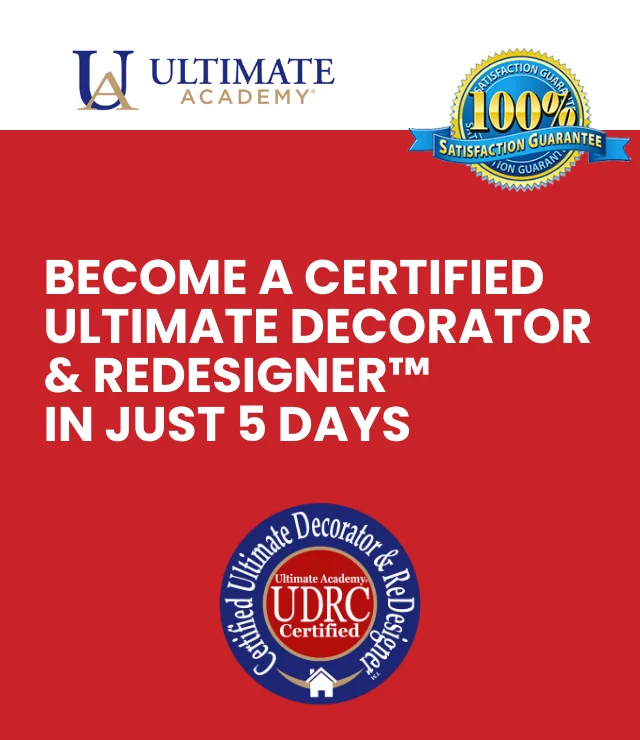
Learn About our Decorating & ReDesign Certification
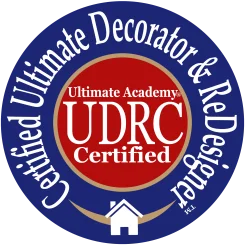

FAQs about Starting a
Decorating Business
Develop an Online Presence: Create a professional website and engage actively on social media platforms to showcase your work, share design ideas, and connect with potential clients.
Leverage Local Advertising: Utilize local online newspapers, magazines, community bulletin boards, and local events to reach potential clients in your area.
Build Partnerships: Network with local businesses, real estate agents, and contractors who can refer clients to you.
Customer Testimonials and Reviews: Encourage satisfied clients to provide testimonials and reviews, which can be powerful tools for attracting new business.
The profitability of a home decor business can vary, but it has the potential to be quite lucrative, especially with the growing interest in home design. Success factors include:
Quality of Service: High-quality work can lead to repeat customers and referrals.
Market Demand: A strong demand for home decor services in your area can greatly influence profitability.
Business Management: Effective cost management, pricing strategies, and marketing efforts play a crucial role in determining profitability.
Starting a decorating business can be straightforward, especially if you have a passion for design and some basic business acumen.
In Ultimate Academy®’s Decorating & ReDesign course, you will learn all you need to know about starting a decorating business, including:
- Skill Development: Having a good eye for design or formal training can be beneficial.
- Business Planning: Creating a solid business plan, including budgeting and marketing strategies.
- Legal Requirements: Understanding and fulfilling any licensing, insurance, or legal requirements for operating a business in your area.
- Networking: Building relationships within the industry to help find clients and grow your business.
Absolutely! Many people successfully make a living as decorators. Key factors to success include:
Skill and Passion: A strong skill set in design and a passion for decorating are essential.
Client Relationships: Building good relationships with clients can lead to repeat business and referrals.
Adaptability: Staying up-to-date with trends and being adaptable to various client needs and styles.
Marketing and Networking: Effectively marketing your services and networking within the industry can help in consistently attracting new clients.




